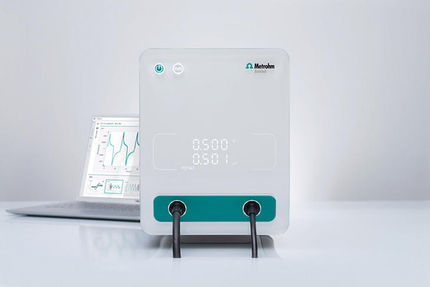In the field of neurochemistry, 5-HT1 receptors are a subfamily of 5-HT receptors which bind the neurotransmitter and peripheral signal mediator serotonin, also known as 5-hydroxytryptamine (5-HT).[1]
Mode of action
5-HT1 receptors are G protein coupled receptors that Gi/Go-coupled. This causes a cellular decrease of cAMP.
Subtypes
Although working basically through the same mechanism, there are several 5-HT1 receptor subtypes (denoted A-F), each encoded by a separate gene. Furthermore each subtype has a somewhat different tissue distribution and binding preference for synthetic 5-HT1 agonist and antagonist ligands.
5-HT1A
Main article: 5-HT1A receptor
5-HT1A acts on the CNS, where it induces neuronal inhibition and controls behaviour, such as sleep, feeding, thermoregulation, aggression, anxiety.
5-HT1B
Main article: 5-HT1B receptor
5-HT1B acts on the CNS, where it induces presynaptic inhibition and behavioural effects. It also has vascular effects, such as pulmonary vasoconstriction.
5-HT1D
Main article: 5-HT1D receptor
5-HT1D acts on the CNS, and affects locomotion and anxiety. It also induces vascular vasoconstriction in the brain. Ergotamine works primarily through the 5-HT1B receptor, since the effect through the 5-HT1D receptor is contrary to the mode of action of ergotamine, i.e. vasoconstriction.
5-HT1E
Main article: 5-HT1E receptor
5-HT1F
Main article: 5-HT1F receptor
References
- ^ Hoyer D, Clarke DE, Fozard JR, Hartig PR, Martin GR, Mylecharane EJ, Saxena PR, Humphrey PP (1994). "International Union of Pharmacology classification of receptors for 5-hydroxytryptamine (Serotonin)". Pharmacol. Rev. 46 (2): 157–203. PMID 7938165.
- ^ Glennon RA, Hong SS, Dukat M, Teitler M, Davis K (1994). "5-(Nonyloxy)tryptamine: a novel high-affinity 5-HT1D beta serotonin receptor agonist". J. Med. Chem. 37 (18): 2828–30. doi:10.1021/jm00044a001. PMID 8071931.
| Transmembrane receptor: G protein-coupled receptors |
|---|
| Class A: Rhodopsin like | Acetylcholine (M1, M2, M3, M4, M5) - Adrenergic (α1 (A, B, D), α2 (A, B, C), β1, β2, β3) - Adrenomedullin - Anaphylatoxin (C3a, C5a) - Angiotensin (1, 2) - Apelin - Bile acid - Bombesin (BRS3, GRPR, NMBR) - Bradykinin (B1, B2) - Cannabinoid (CB1, CB2) - Chemokine - Cholecystokinin (A, B) - Dopamine (D1, D2, D3, D4, D5) - Eicosanoid (CysLT (1, 2), LTB4 (1, 2), FPRL1, OXE, Prostaglandin ((DP (1, 2), EP (1, 2, 3, 4), PGF, Prostacyclin, Thromboxane) - EBI2 - Endothelin (A, B) - Estrogen - Formyl peptide (1, L1, L2) - Free fatty acid (1, 2, 3, 4) - FSH - Galanin (1, 2, 3) - Gonadotropin-releasing hormone (1, 2) - GPR (1, 3, 4, 6, 12, 15, 17, 18, 19, 20, 21, 22, 23, 25, 26, 27, 31, 32, 33, 34, 35, 37, 39, 42, 44, 45, 50, 52, 55, 61, 62, 63, 65, 68, 75, 77, 78, 79, 82, 83, 84, 85, 87, 88, 92, 101, 103, 119, 120, 132, 135, 139, 141, 142, 146, 148, 149, 150, 151, 152, 153, 160, 161, 162, 171, 172, 173, 174, 176, 182) - Ghrelin - Histamine (H1, H2, H3, H4) - Kisspeptin - Luteinizing hormone/choriogonadotropin - Lysophospholipid (1, 2, 3, 4, 5, 6, 7, 8) - MAS (1, 1L, D, E, F, G, X1, X2, X3, X4) - Melanocortin (1, 2, 3, 4, 5) - MCHR (1, 2) - Melatonin (1A, 1B)- Motilin - neuromedin (B, U (1, 2)) - Neuropeptide (B/W (1, 2), FF (1, 2), S, Y (1, 2, 4, 5)) - Neurotensin (1, 2) - Opioid (Delta, Kappa, Mu, Nociceptin, but not Sigma) - Olfactory - Opsin (3, 4, 5, 1LW, 1MW, 1SW, RGR, RRH) - Orexin (1, 2) - Oxytocin - Oxoglutarate - PAF - Prokineticin (1, 2) - Prolactin-releasing peptide - Protease-activated (1, 2, 3, 4) - Purinergics (Adenosine (A1, A2a, A2b, A3), P2Y, (1, 2, 4, 5, 6, 8, 9, 10, 11, 12, 13, 14)) - Relaxin (1, 2, 3, 4) - Somatostatin (1, 2, 3, 4, 5) - Serotonin, all but 5-HT3 (5-HT1 (A, B, D, E, F), 5-HT2 (A, B, C), 5-HT (4, 5A, 6, 7)) - SREB - Succinate - TAAR (1, 2, 3, 5, 6, 8, 9) - Tachykinin (1, 2, 3) - Thyrotropin - Thyrotropin-releasing hormone - Urotensin-II - Vasopressin (1A, 1B, 2) |
|---|
| Class B: Secretin like | Brain-specific angiogenesis inhibitor (1, 2, 3) - Cadherin (1, 2, 3) - Calcitonin - CD97 - Corticotropin-releasing hormone (1, 2) - EMR (1, 2, 3) - Glucagon (GR, GIPR, GLP1R, GLP2R) - Growth hormone releasing hormone - PACAPR1- GPR (56, 64, 97, 98, 110, 111, 112, 113, 114, 115, 116, 123, 124, 125, 126, 128, 133, 143, 144, 157) - Latrophilin (1, 2, 3, ELTD1) - Parathyroid hormone (1, 2) - Secretin - Vasoactive intestinal peptide (1, 2) |
|---|
| Class C: Metabotropic glutamate / pheromone | Calcium-sensing receptor - GABA B (1, 2) - Glutamate receptor (Metabotropic glutamate (1, 2, 3, 4, 5, 6, 7, 8)) - GPRC6A - GPR (156, 158, 179) - RAIG (1, 2, 3, 4) - Taste receptors (TAS1R (1, 2, 3) TAS2R (1, 3, 4, 5, 8, 9, 10, 12, 13, 14, 16, 38, 39, 40, 41, 43, 44, 45, 46, 47, 48, 49, 50)) |
|---|
| Frizzled / Smoothened | Frizzled (1, 2, 3, 4, 5, 6, 7, 8, 9, 10) - Smoothened |
|---|
|







